Text Structures Teaching Resources
Bring text structures to life in the classroom with text structure posters for your classroom walls, printable worksheets and downloadable Google Slides templates that easily break down the way authors organize information in a text.
Familiarity with different text structures is crucial for helping our students develop reading comprehension skills and become more confident readers. So how do you teach students all about text structures? We're so glad you asked!
Our teacher team has created hundreds of resources with this concept at the heart. With editable resources at the ready, you can save time on your lesson planning, so you have more time with your family!
Each resource in this ELA collection is curriculum-aligned to help students meet Common Core and state-level standards for understanding text structures. Each has undergone a thorough review by our teacher team to ensure it's ready for your students.
New to teaching text structure, or just looking for fresh ways to engage your students? Read on for a primer from our teacher team, including a handy definition you can use to explain the meaning of text structure to your students.
What Is a Text Structure? A Kid-Friendly Definition
Whether you've been teaching students who've already passed this stage of literacy instruction or teaching classes for younger learners, you may need a quick refresher! Don't worry — the ELA teachers on the Teach Starter team are here to back you up with a simple definition you can use to explain text structures.
Text structures are thee different ways that an author has organized information within the text. These types of organization appear in both fiction and nonfiction texts.
Text structures help us use many of our reading comprehension strategies like visualizing, inferencing and monitoring comprehension.
6 Text Structure Examples to Share With Students
Looking for text structure examples to share with your students during your lessons? Here are some of the more common — and more helpful— text structures students may encounter in their reading:
- Problem and solution
- Chronological
- Cause and effect
- Inductive and deductive
- Description
- Sequence/process
How to Teach About Text Structures — Fun Ideas for Teachers
Looking for fun ideas for teaching text structures in the classroom? Try these tips from our teacher team!
- Practice sequencing stories with cards that map out a familiar task — but only if students can put them in the right order!
- Before reading a text featuring "cause and effect" out loud to the class, supply students with cause and effect graphic organizers. Students can be instructed to make notes of the different cause and effect examples they hear throughout your read-aloud.
- Create a text structures anchor chart with your class to help break down the different ways authors organize information.
- Add a text structures sorting activity to your reading center!
- Plus Plan

Guided Writing - How To Make Fruit Salad
A 60 minute lesson in which students will jointly construct a simple recipe for fruit salad in small groups.
- Free Plan
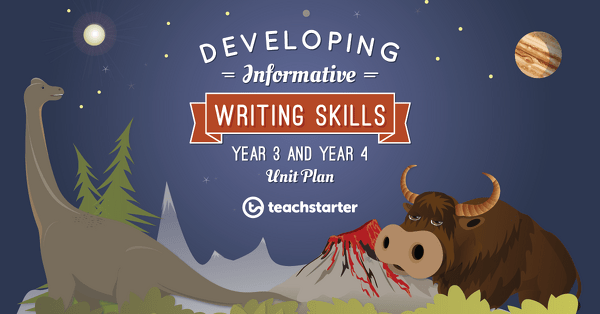
Using a Stimulus - Independent Writing
A 60-minute lesson in which students will independently write an informative text using appropriate text structure, language, and features.
- Plus Plan
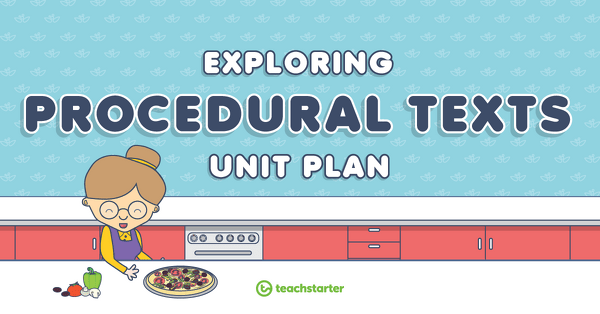
Simon Says!
A 60 minute lesson in which students will explore action verbs, common nouns, and adverbial phrases in procedures.
- Free Plan
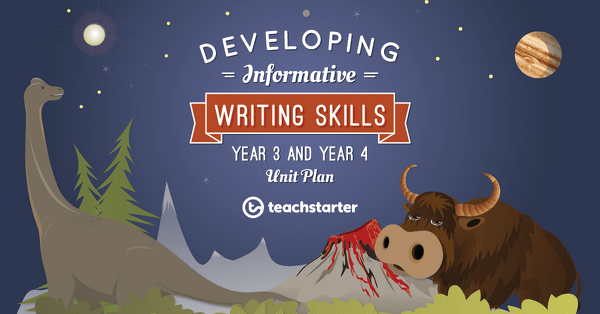
Writing an Informational Paragraph - Modeled Writing
A 60-minute lesson in which students will write an informative paragraph.
- Plus Plan
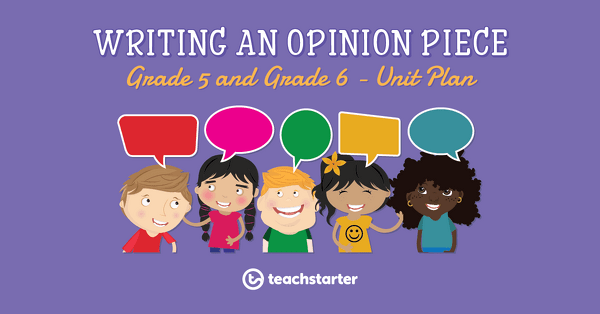
Opinion Speeches - Constructing
A 60 minute lesson in which students will construct an opinion speech using appropriate text structure, language features and devices.
- Plus Plan
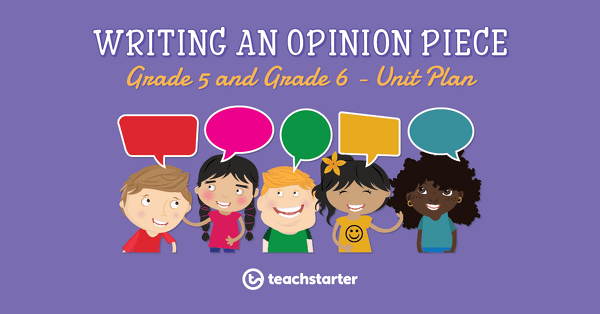
Opinion Speech - Researching
A 60 minute lesson in which students will research evidence to include in an opinion speech about a topical issue.
- Plus Plan
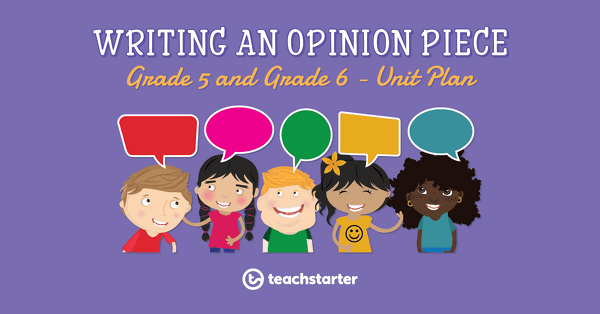
Shared Writing - Opinion Letters
A 60 minute lesson in which students will write an opinion letter using appropriate text structure, language features and devices.
- Plus Plan
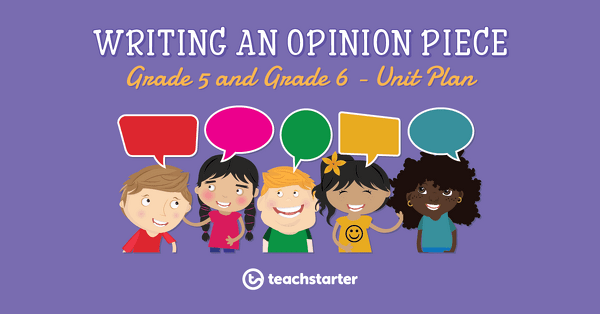
Modeled Writing - Improving an Opinion Piece
A 60 minute lesson in which students will improve an opinion piece by applying knowledge of appropriate language features and devices.
- Plus Plan

Research Skills - Note Taking
A 60 minute lesson in which students will take appropriate notes from an informative text.
- Plus Plan
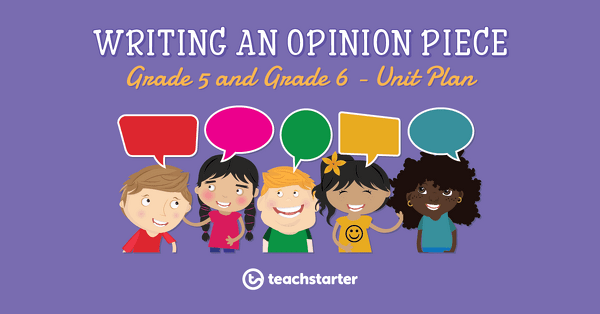
Constructing an Opinion Paragraph
A 60 minute lesson in which students will identify and use correct paragraph structure.
- Plus Plan
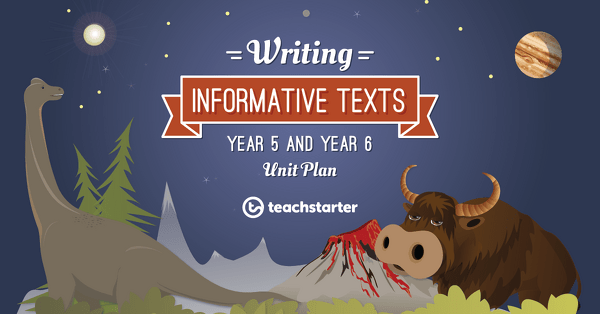
Using a Stimulus - Independent Writing
A 60 minute lesson in which students will independently write an informative text, using appropriate text structure, language and features.
- Plus Plan

Opinion Pieces - Language Features
A 60 minute lesson in which students will identify and explore the language features of an opinion piece.
- Plus Plan

Opinion Pieces - Organizational Structure
A 60 minute lesson in which students will identify and explore the organizational structure of an opinion piece.
- Plus Plan
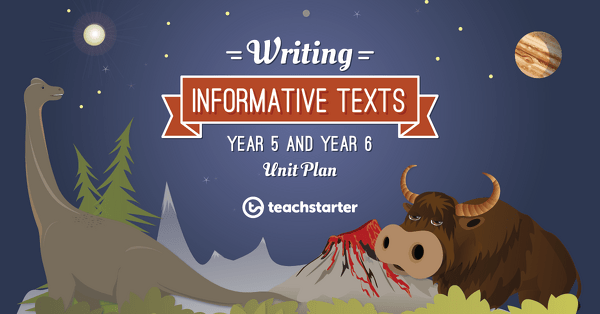
Constructing a Paragraph - Modeled Writing
A 60 minute lesson in which students will correctly construct an informative paragraph.
- Plus Plan
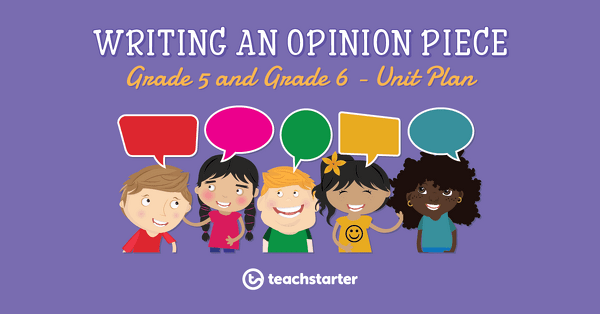
Convince Me, If You Can!
- Plus Plan
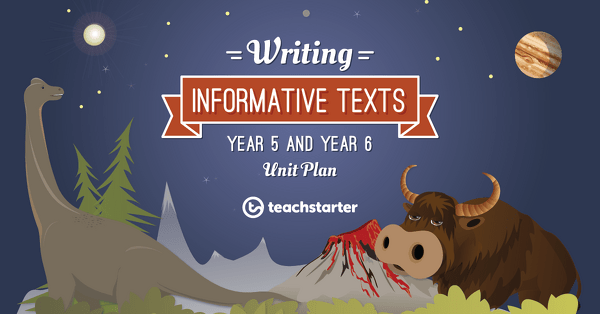
Informative Paragraph Structure
A 60 minute lesson in which students will explore the correct paragraph structure for informative writing.
- Plus Plan
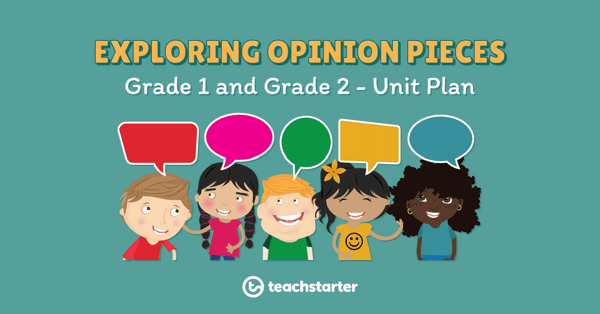
Eat Your Peas - Independent Writing
A 60 minute lesson in which students will independently construct a simple opinion piece about a familiar situation.
- Plus Plan
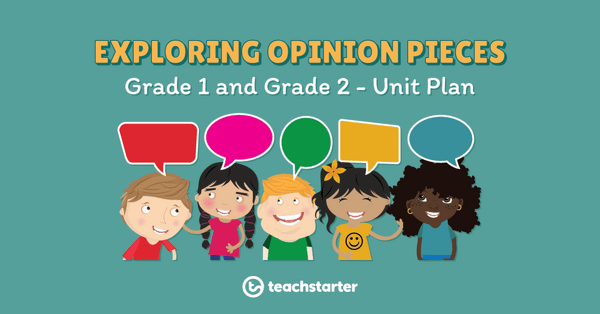
What Pet Should I Get? - Shared Writing
A 60 minute lesson in which students will construct a simple opinion piece on a familiar situation in pairs.
- Plus Plan
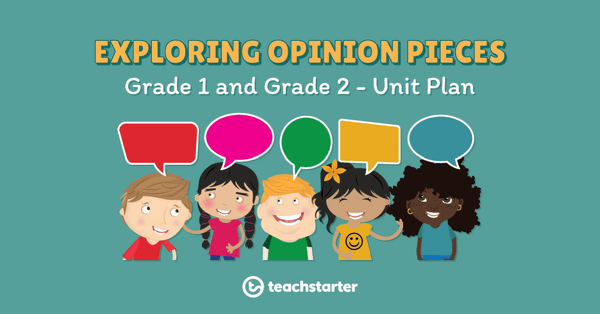
Hey, Little Ant - Modeled Writing
A 60 minute lesson in which students will construct a simple opinion piece on a familiar topic.
- Plus Plan
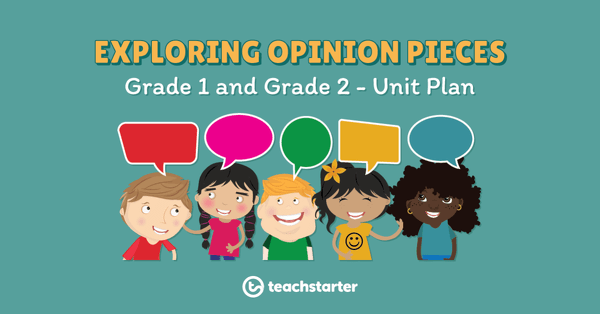
Strong Words Make Strong Opinions
A 60 minute lesson in which students will explore how word choice can be used to strengthen an opinion.
- Plus Plan
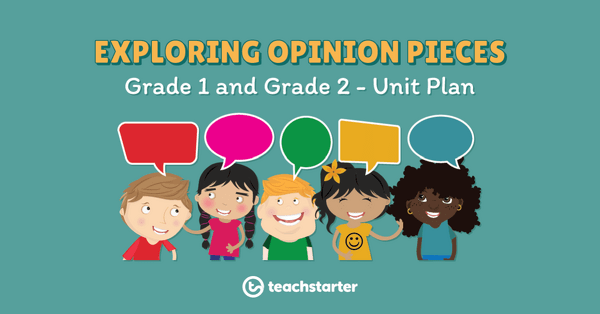
Opinion Piece Language Features
A 60 minute lesson in which students will identify and explore the language features of opinion pieces.
- Plus Plan
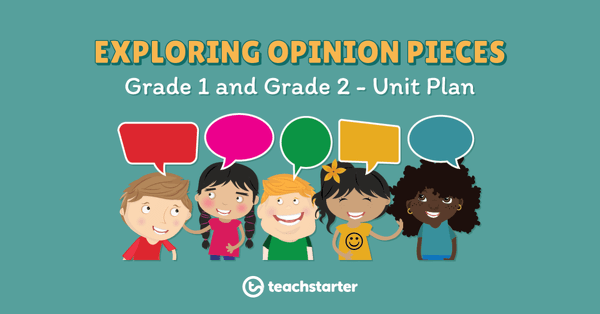
Opinion Piece Organizational Structure
A 60 minute lesson in which students will identify and explore the basic organizational structure of opinion pieces.
- Plus Plan
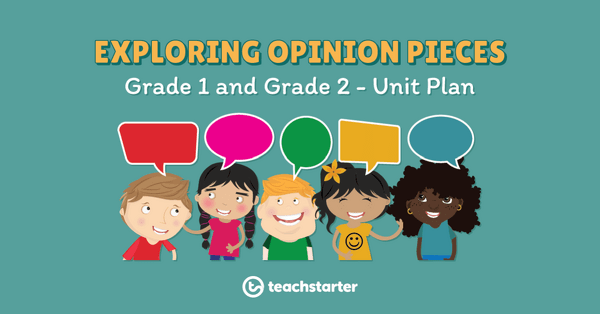
For or Against?
A 60 minute lesson in which students will investigate reasons for and against a situation or topic.
- Plus Plan
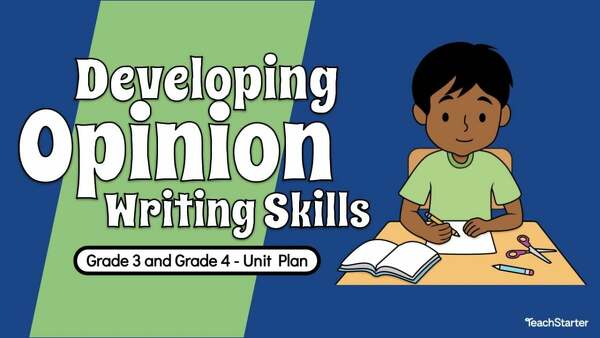
Applying Proofreading and Editing Skills
A 60 minute lesson in which students will learn and apply proofreading and editing skills.
- Plus Plan
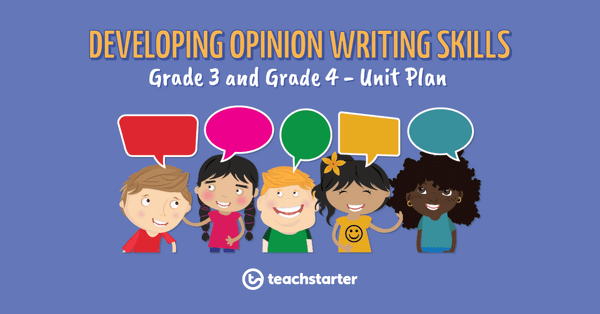
Using an Opinion Prompt - Shared Writing
A 60 minute lesson in which students will use a writing prompt and scaffolding sheet to write an opinion piece in pairs.
- Plus Plan
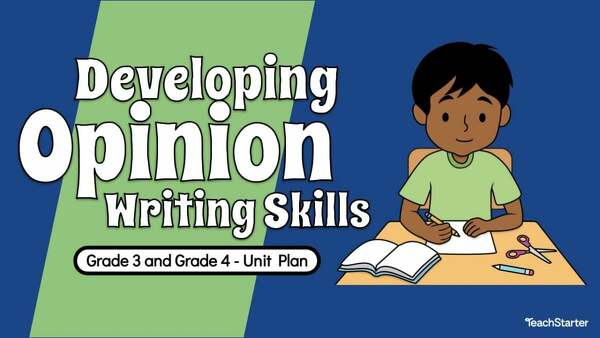
Constructing an Opinion Paragraph Using OREO
A 60 minute lesson in which students will identify and use the correct paragraph structure when writing an opinion piece.
- Plus Plan
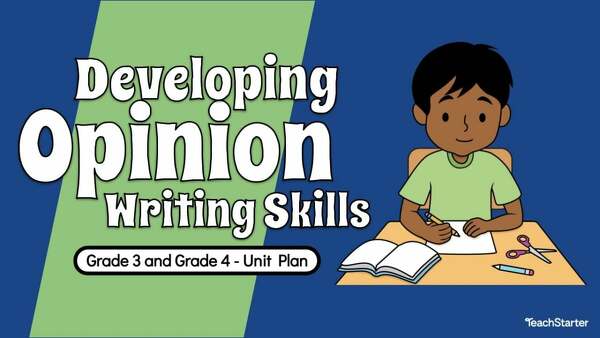
Building an Opinion Using Rhetorical Devices
A 60 minute lesson in which students will use persuasive devices to build a convincing opinion about an issue.
- Plus Plan
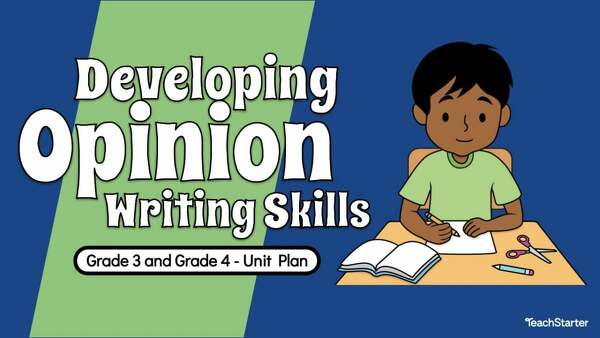
Introducing Persuasive Devices
A 60 minute lesson in which students will explore how persuasive devices can be used to strengthen a point of view.
- Plus Plan
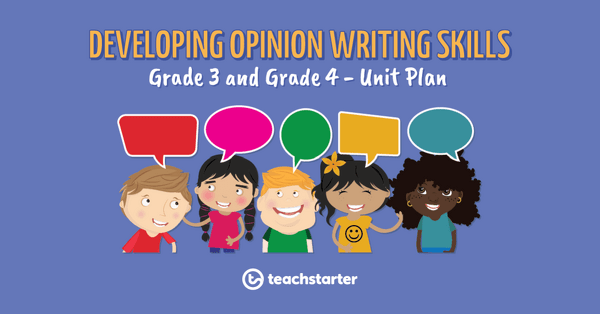
Exploring Modality
A 60 minute lesson in which students will explore how modal words are used to express degrees of certainty in an opinion piece.
- Plus Plan
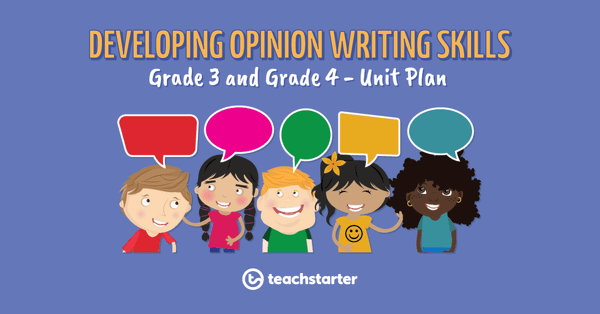
Opinion Piece - Language Features
A 60 minute lesson in which students will identify and explore the language features of an opinion piece.
- Plus Plan
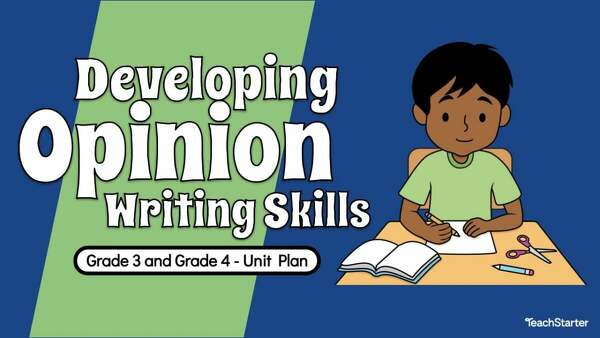
Opinion Piece - Organizational Structure
A 60 minute lesson in which students will identify and explore the organizational structure of an opinion piece.
- Plus Plan
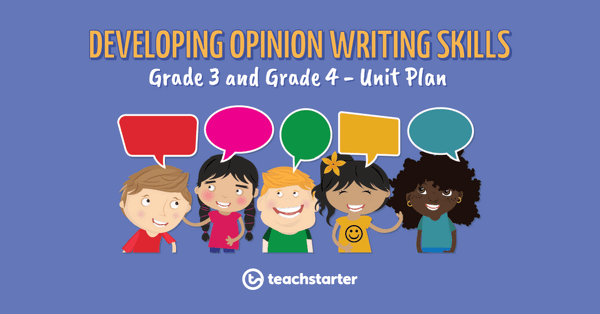
For or Against?
A 60 minute lesson in which students will investigate point of view in relation to a situation or issue.